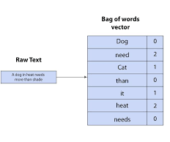Is it Real or is it Gen-r-X?
The Rise of AI-Generated Content: A Double-Edged Sword It began with a viral deepfake video of a celebrity singing an unexpected tune. Soon, political figures appeared to say things they never uttered. Before long, hyper-realistic AI-generated content flooded the internet, blurring the line between reality and fabrication. While AI-driven creativity unlocks endless possibilities, it also raises an urgent question: How can society discern truth in an era where anything can be convincingly fabricated? Enter SynthID, Google DeepMind’s pioneering solution designed to embed imperceptible watermarks into AI-generated images, offering a reliable method to verify authenticity. What Is SynthID, and Why Does It Matter? At its core, SynthID is an AI-powered watermarking tool that embeds and detects digital signatures in AI-generated images. Unlike traditional watermarks, which can be removed or altered, SynthID’s markers are nearly invisible to the human eye but detectable by specialized AI models. This innovation represents a significant step in combating AI-generated misinformation while preserving the integrity of creative AI applications. How SynthID Works SynthID’s technology operates in two critical phases: This method ensures that even if an image is slightly edited, resized, or filtered, the SynthID watermark remains intact—making it far more resilient than conventional watermarking techniques. SynthID for AI-Generated Text Large language models (LLMs) generate text one token at a time, where each token may represent a single character, word, or part of a phrase. The model predicts the next most likely token based on preceding words and probability scores assigned to potential options. For example, given the phrase “My favorite tropical fruits are __,” an LLM might predict tokens like “mango,” “lychee,” “papaya,” or “durian.” Each token receives a probability score. When multiple viable options exist, SynthID can adjust these probability scores—without compromising output quality—to embed a detectable signature. (Source: DeepMind) SynthID for AI-Generated Music SynthID converts an audio waveform—a one-dimensional representation of sound—into a spectrogram, a two-dimensional visualization of frequency changes over time. The digital watermark is embedded into this spectrogram before being converted back into an audio waveform. This process leverages audio properties to ensure the watermark remains inaudible to humans, preserving the listening experience. The watermark is robust against common modifications such as noise additions, MP3 compression, or tempo changes. SynthID can also scan audio tracks to detect watermarks at different points, helping determine if segments were generated by Lyria, Google’s advanced AI music model. (Source: DeepMind) The Urgent Need for Digital Watermarking in AI AI-generated content is already disrupting multiple industries: In this chaotic landscape, SynthID serves as a digital signature of truth, offering journalists, artists, regulators, and tech companies a crucial tool for transparency. Real-World Impact: How SynthID Is Being Used Today SynthID is already integrated into Google’s Imagen, a text-to-image AI model, and is being tested across industries: By embedding SynthID into digital content pipelines, these industries are fostering an ecosystem where AI-generated media is traceable, reducing misinformation risks. Challenges & Limitations: Is SynthID Foolproof? While groundbreaking, SynthID is not without challenges: Despite these limitations, SynthID lays the foundation for a future where AI-generated content can be reliably traced. The Future of AI Content Verification Google DeepMind’s SynthID is just the beginning. The battle against AI-generated misinformation may involve: As AI reshapes the digital world, tools like SynthID ensure innovation does not come at the cost of authenticity. The Thin Line Between Trust & Deception AI is a powerful tool, but without safeguards, it can become a weapon of misinformation. SynthID represents a bold step toward transparency, helping society navigate the blurred boundaries between real and artificial content. As the technology evolves, businesses, policymakers, and users must embrace solutions like SynthID to ensure AI enhances reality rather than distorting it. The next time an AI-generated image appears, one might ask: Is it real, or does it carry the invisible signature of SynthID? Like Related Posts Salesforce OEM AppExchange Expanding its reach beyond CRM, Salesforce.com has launched a new service called AppExchange OEM Edition, aimed at non-CRM service providers. Read more The Salesforce Story In Marc Benioff’s own words How did salesforce.com grow from a start up in a rented apartment into the world’s Read more Salesforce Jigsaw Salesforce.com, a prominent figure in cloud computing, has finalized a deal to acquire Jigsaw, a wiki-style business contact database, for Read more Service Cloud with AI-Driven Intelligence Salesforce Enhances Service Cloud with AI-Driven Intelligence Engine Data science and analytics are rapidly becoming standard features in enterprise applications, Read more







